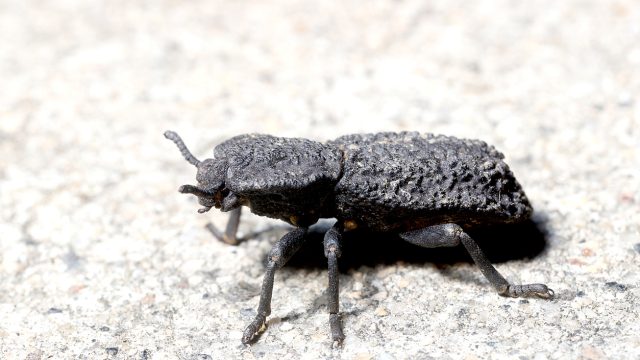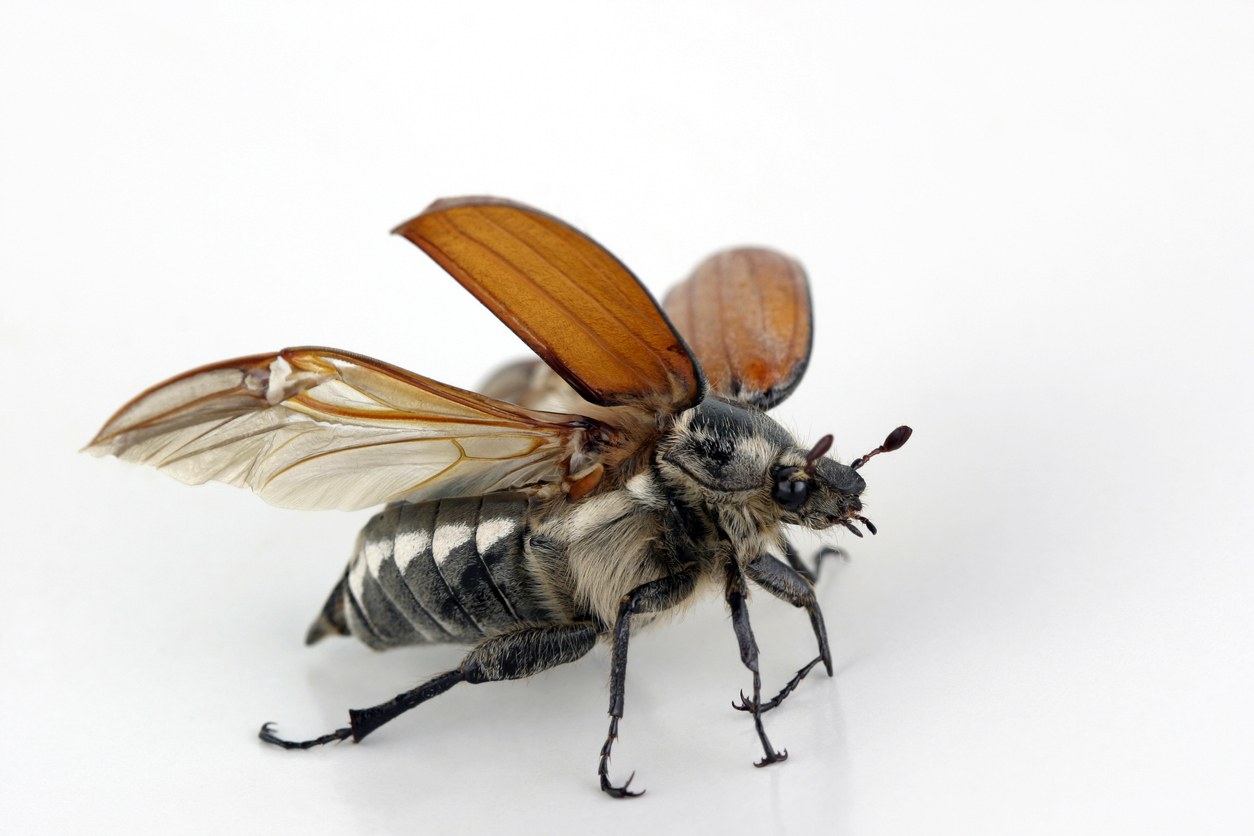You Can’t Kill This Bug, Even If You Run Over It With Your Car

Meet the diabolical ironclad beetle (pretty boss name, if you ask us). It’s only about two centimeters long, but built like a tiny top-0f-the-line military tank—capable of surviving being run over by your car, according to an Oct. 2020 study published in the journal Nature. Yes, this is an actual scientific fact—and one that could lead to groundbreaking engineering innovations.
The new study, led by engineers from the University of California, Irvine (UCI) and Purdue University, found that this particular beetle can withstand an applied force of about 150 newtons—roughly 39,000 times its body weight—before the exoskeleton of the insect begins to fracture. To put that into perspective, the researchers estimate that the amount of force a car tire would apply if it ran over the beetle would be about 100 newtons. Other beetles tested by the researchers were unable to withstand even half of the force that the ironclad beetle could.
What makes this particular insect so incredibly tough that it’s almost indestructible? Read on to find out. And for bugs you definitely want to keep your distance from, check out The Most Painful Sting You Can Get From an Insect.
1
Its lack of wings contributes to its strength.

Scientists say the key to the beetle’s strength lies in the two armor-like “elytron” that connect at the suture, which run along the insect’s abdomen. In flying beetles, the elytra are there to protect the wings and facilitate the ability to fly. The diabolical ironclad beetle, however, has no wings, which allows the elytra and the manner in which they are connected to distribute force more evenly throughout its body. And if you’re wondering what that scurrying sound coming from your wall is, These Are the Most Dangerous Household Pests, According to Experts.
2
Its armor is connected like a puzzle.

“The suture kind of acts like a jigsaw puzzle. It connects various exoskeletal blades—puzzle pieces—in the abdomen under the elytra,” Pablo Zavattieri, PhD, a civil engineering professor at Purdue University, said in a statement. And if you think you know the most dangerous living thing out there, check out The Deadliest Animal to Humans in the World Will Shock You.
3
And it offers a multitiered defense.

According to the researchers, the protective blades have the ability to interlock with each other under applied force, while still maintaining their ability to separate from the suture. This ultimately provides a more even distribution of the force, as well as effective protection of vital organs.
4
Engineers are using the ironclad beetle for inspiration.

“An active engineering challenge is joining together different materials without limiting their ability to support loads. The diabolical ironclad beetle has strategies to circumvent these limitations,” David Restrepo, an assistant professor at the University of Texas at San Antonio, said in a statement. Using the insect’s jigsaw-like structure as a model, engineers believe they can create fasteners (like joints for machines) that will improve mechanical function in the components of airplanes, automobiles, and other industrial machinery. And for more helpful information delivered to your inbox, sign up for our daily newsletter.